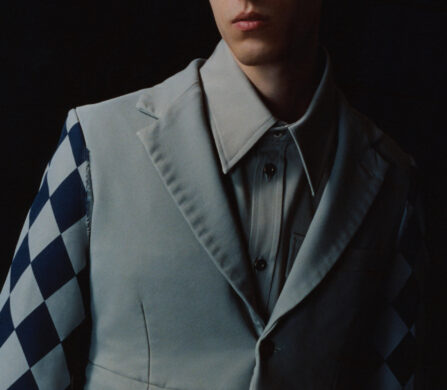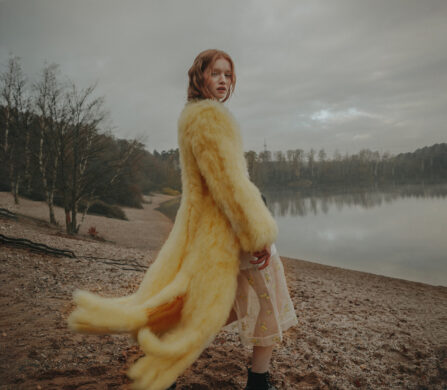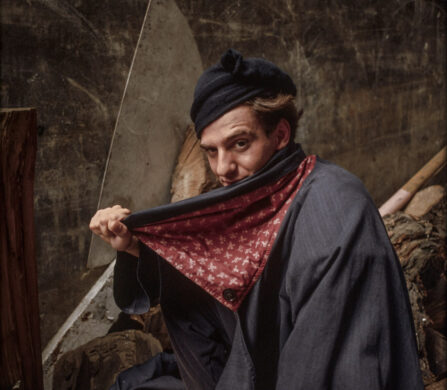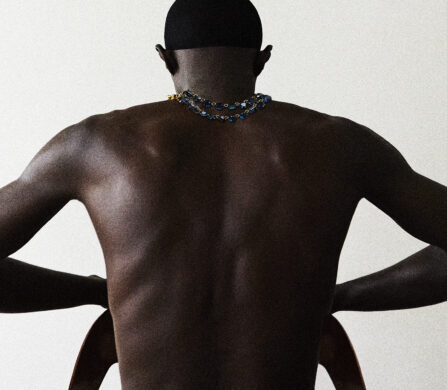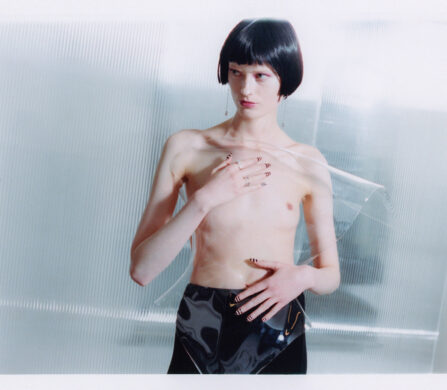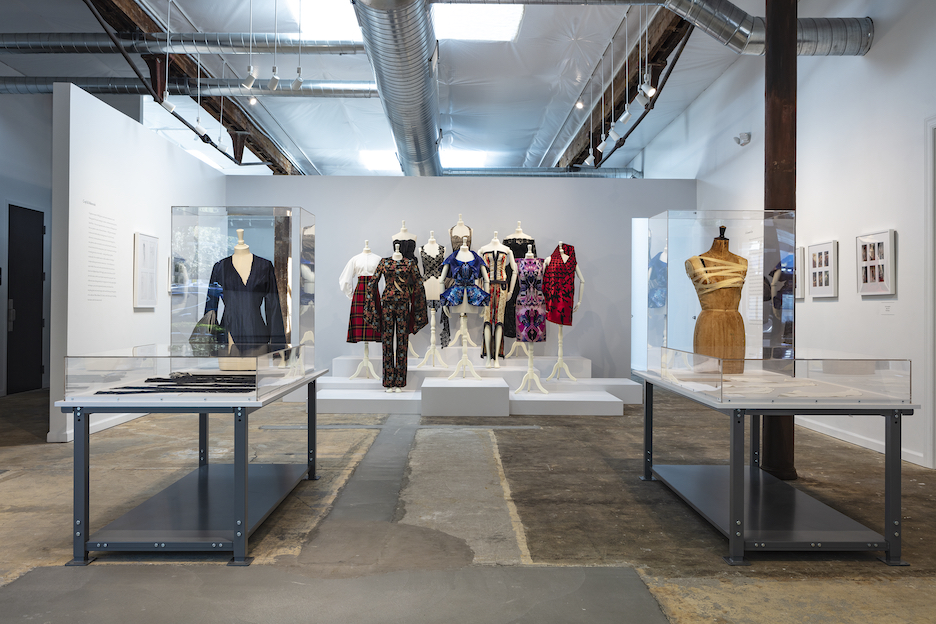
Installation View: Introducing Lee Alexander McQueen. Photography: David Johnson. Courtesy Barrett Barrera Projects.
Alexander McQueen’s works over the course of his lifetime left an enduring impact on the fashion world. While his legacy may be grand, his beginnings were anything but. Born to a taxi driver and a social science teacher living in London, McQueen developed his knowledge and education of fashion through any means he could get his hands on. Introducing Lee Alexander McQueen, an exhibition currently on view at Barrett Barrera Projects, explores this history further, providing examples of his work over the years alongside preliminary sketches to give visitors a behind-the-scenes look at this man’s fascinating life and body of work. To know more about it all, Schön! spoke to curator Jessica Baran.
Give us a little background on this exhibition. What inspired you to put this on in the present moment?
McQueen has been a fixture of Barrett Barrera Projects since its founding. Susan Barrett, our company president, became especially interested in McQueen when she was directing another St. Louis cultural venue, the World Chess Hall of Fame. Wishing to realise a project that integrated chess alongside her passions for contemporary art and fashion, she came across McQueen’s S/S 2005 collection, It’s Only a Game, for which his designs were presented on models standing on a life-size chessboard. This discovery led to the development of several visionary enterprises: the exhibition A Queen Within, a large-scale exploration of feminine archetypes through contemporary art and fashion, which debuted at the WCHOF in 2014 and is still currently travelling in an expanded iteration through BBP; her McQueen collection, now overseen by BBP, which has now been appraised as the world’s largest private collection of his work; and, ultimately, the establishment of Barrett Barrera Projects itself — a business founded on supporting cross-disciplinary projects that often blend fashion and visual art.
Which is to say that McQueen is of perennial interest to us at BBP — especially because of his emphasis on multi-disciplinary practice. As Savage Beauty (both the Met and V&A’s presentations) proved, McQueen is a rare figure who transcends being siloed as simply a fashion designer given his deep engagement with history, craft, film, visual art, technology, and performance art as well as garment creation. This holistic approach feels very contemporary, if not timeless.
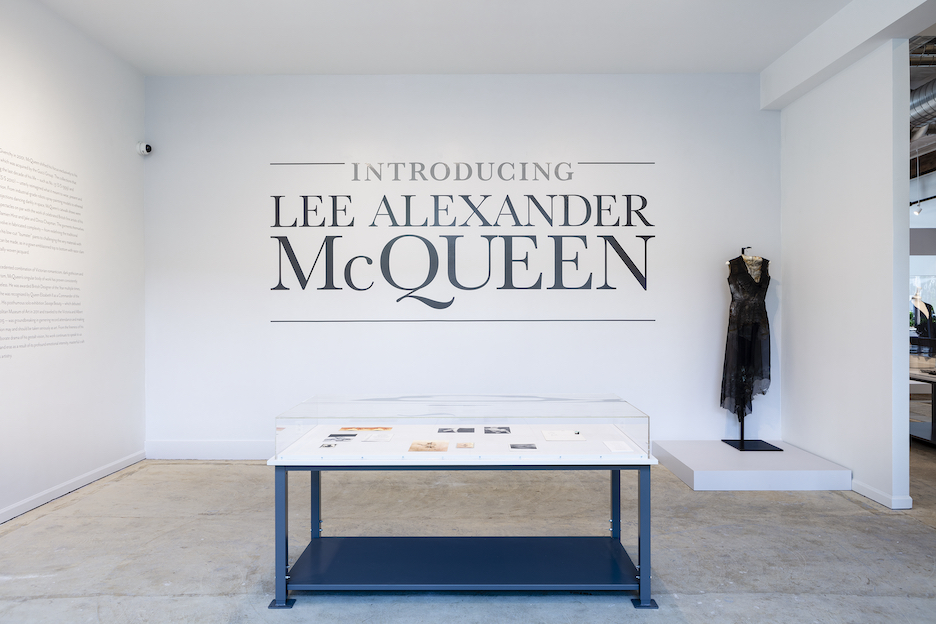
Installation View: Introducing Lee Alexander McQueen. Photography: David Johnson. Courtesy Barrett Barrera Projects.
What can you tell us about the selection process for the featured garments? What qualities were you looking for in the pieces?
After opening Ann Ray & Lee McQueen: Rendez-Vous this past autumn, we acquired a number of McQueen garments and ephemera such as garment patterns, design sketches, and runway show programs and invitations, primarily from the years after his graduation from Central St. Martin’s (in 1992) and prior to him becoming head of the Givenchy atelier (in 1996). These pieces fit easily into the context of developing an introductory narrative for McQueen, as they exemplify his identity as an expert craftsperson whose facility with pattern-cutting and garment construction — resulting from his early apprenticeships on Saville Row — is foundational to his practice. These early works also display his burgeoning and abiding interest in patterns and fabrics — which, early on, were sourced cheaply from street markets and later evolved into innovative, technologically-driven experiments in digital printing and weaving. Pieces such as a black lace a-symmetrical top from Highland Rape (A/W 1995) illustrate well the start of this trajectory, crafted as it is from accessible material that has been transformed literally by the way it’s been cut into and delicately tailored — signature McQueen gestures — while also presaging his long engagement with lace.
The ten garments included in the show serve as a concise overview of his career, beginning with his early work (Highland Rape, 1995 A/W) to the pre-Collection for his final, posthumously produced A/W 2010 collection. The garments were selected because of their inclusion in some of his major runway shows — such as Highland Rape, The Hunger (S/S 1996), Sarabande (S/S 2007), The Horn of Plenty (A/W 2009) and Plato’s Atlantis (S/S 2010), among others, and for their ability to embody defining motifs in his work, such as his tailoring and craft, material choice, historical and filmic allusions, and ingenuity of construction. For instance, the blue jacket from Plato’s Atlantis is an astonishing example of his digital pattern designs, drawn from blending deep-sea and aerial landscape photography, as well as his late practice of constructing garments directly on the mannequin, leading to an almost architectural design.
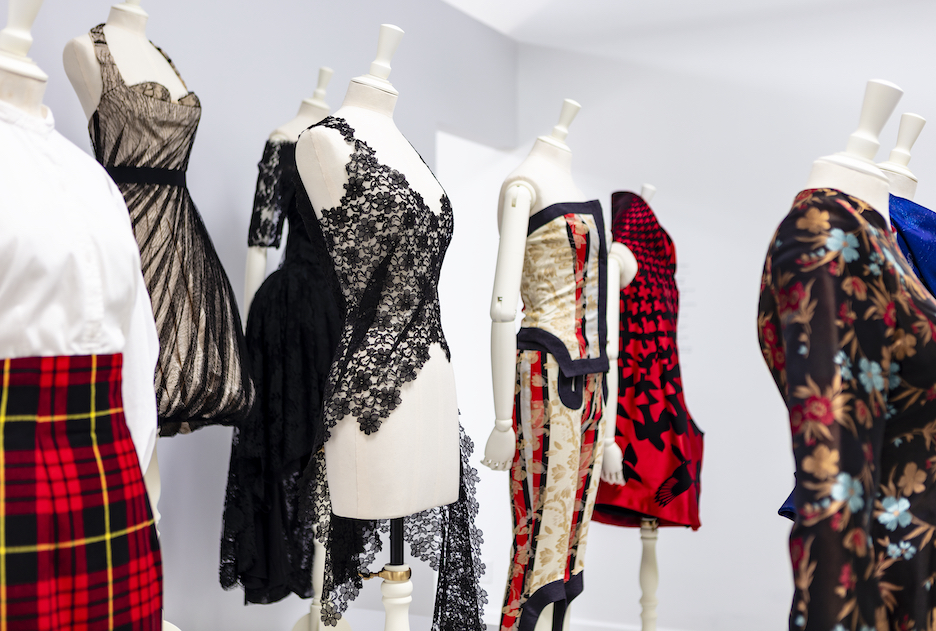
Installation View: Introducing Lee Alexander McQueen. Photography: David Johnson. Courtesy Barrett Barrera Projects.
What did curating these garments, sketches and patterns teach you about McQueen?
Engaging with the early ephemera alongside the garments really emphasised the palpable shift in the fashion industry that McQueen straddled and in a lot of ways serves to quintessentially illustrate it. Coming from humble means and working, as he did initially, in unheated flats with a handful of friends with no financial backing, using cheap and readily available materials, hand-making his garments, collaborating with emerging peers to hand-print his pattern designs and help realise, on a dime, his runway presentations — this was the reality of the fashion world prior to its total overhaul by multinational conglomerates like LVMH and the Gucci Group (now Kering), which ultimately also absorbed McQueen. Which is to say, it’s easy to assume that the fashion industry as it is today — with its global corporate status and diluted brand identities — is what it’s always been, especially for “luxury” or bespoke makers.
But that isn’t the case. McQueen is a rare example of a designer who really remained true to his vision despite enduring this change in the industry; “Alexander McQueen” not only remained an identifiable extension of “Lee’s” original vision — he was able, in many ways, to use his additional means to enrich, experiment and expand upon that vision. It also, as we know, took a devastating toll on him. But it’s amazing to be able to see this full arc — from those hand-sketched designs and delicate hand-cut patterns to the digitally woven jacquards of his final show — and feel the tactile reality of that story.
This exhibition complements Ann Ray & Lee McQueen: Rendez-Vous. How do these two exhibitions relate to, or potentially inform, each other?
Introducing Lee Alexander McQueen was organised as a preface to a larger-scaled exhibition we opened last Fall called Ann Ray & Lee McQueen: Rendez-Vous, which focuses on the thirteen-year friendship and creative collaboration between McQueen and French photographer Ann Ray. Once on view, we realised that our audience may not in fact be familiar with McQueen and his work — and so we decided to construct a concise introduction to his oeuvre, featuring some of our newer acquisitions. The two exhibitions are now open concurrently and serve to complement one another.
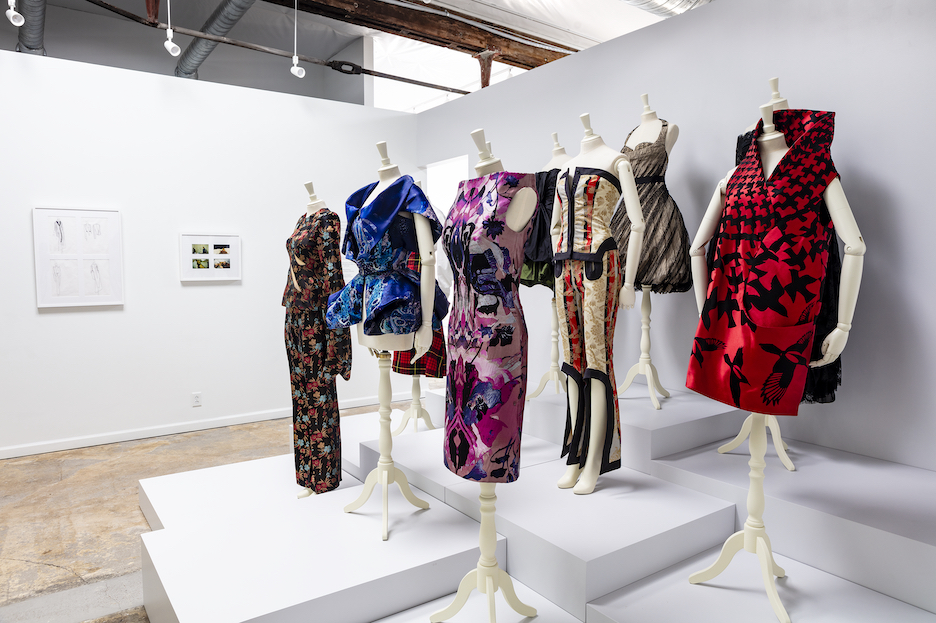
Installation View: Introducing Lee Alexander McQueen. Photography: David Johnson. Courtesy Barrett Barrera Projects.
What message or story would you like viewers to take away from the Introducing Lee Alexander McQueen?
My answer here is interwoven with the one above, in which I describe what curating this show taught me about McQueen. I hope that viewers take away a similar realisation to the one I had, that seemingly monolithic fashion labels like “Alexander McQueen” have within them a human story, one that was not connected to privilege or a desire to make luxury commodities but rather one that’s synonymous with any creative journey in which an artist, through their chosen media, desired to express something about the world through whatever means they had available. That’s very inspiring to me. It’s possible to appreciate a finely made gown, for instance, as an expressive object similar to the way one might appreciate a sculpture or painting. Appreciating it doesn’t mean that you want to wear it or purchase it — it simply means that you can allow it to tell you something about, perhaps, self-imagining and the many inventive ways that can be approached. And maybe it also gives you permission to be more curious about clothes not as consumables but as everyday expressions of who we are and how we move through the world.
Check out some of the pieces from the exhibition below:
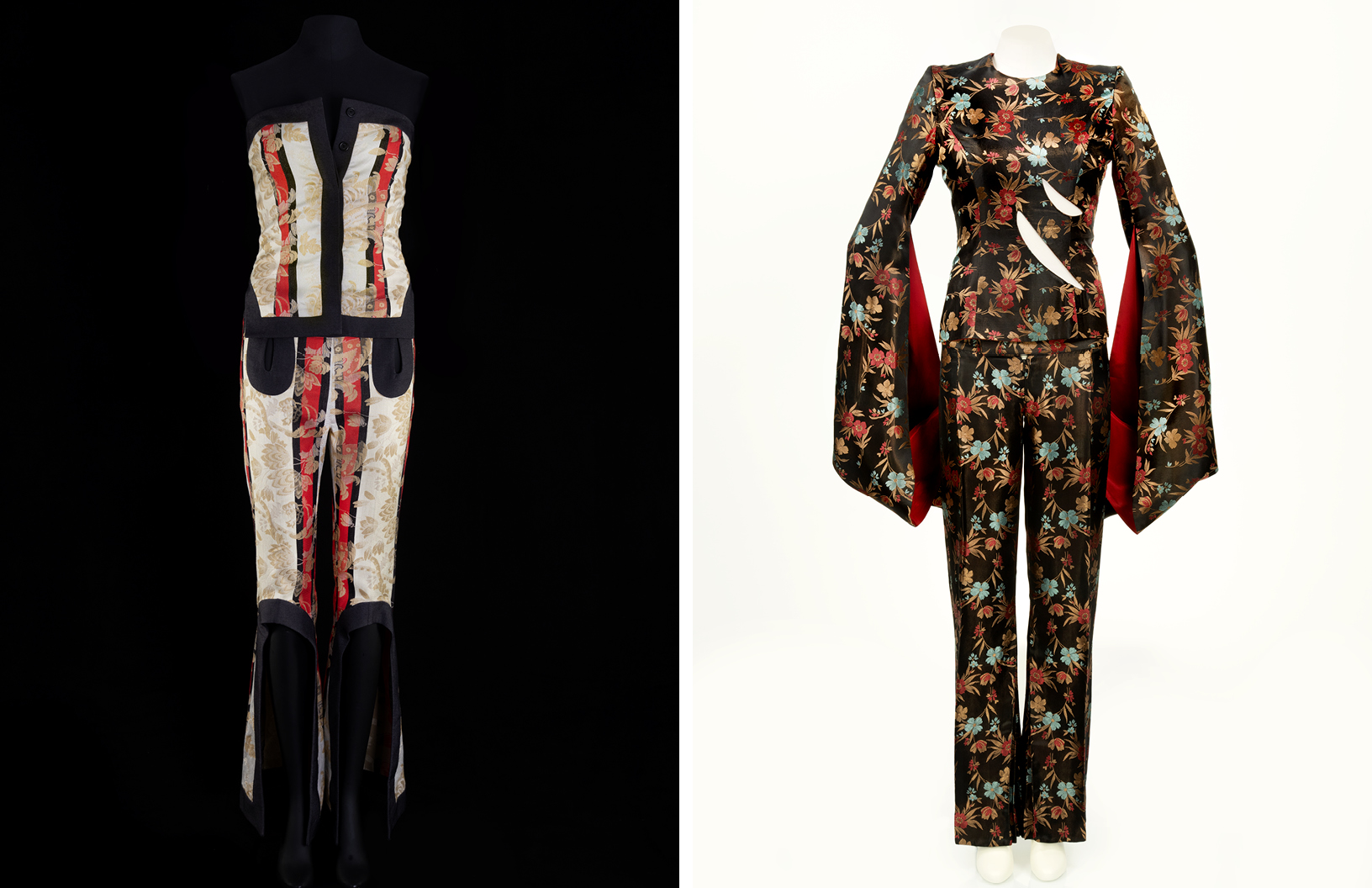
Eye, Spring/Summer 2000
Evening pantsuit with cut-outs
Courtesy of Barrett Barrera Projects & RKL Consulting
Photo by Sarah Carmody
opposite
The Hunger, Spring/Summer 1996
Chinese silk brocade suit with slashed paneled top
Silk brocade, silk mesh, silk, taffeta
Courtesy of Barrett Barrera Projects & RKL Consulting
Photo by Sarah Carmody
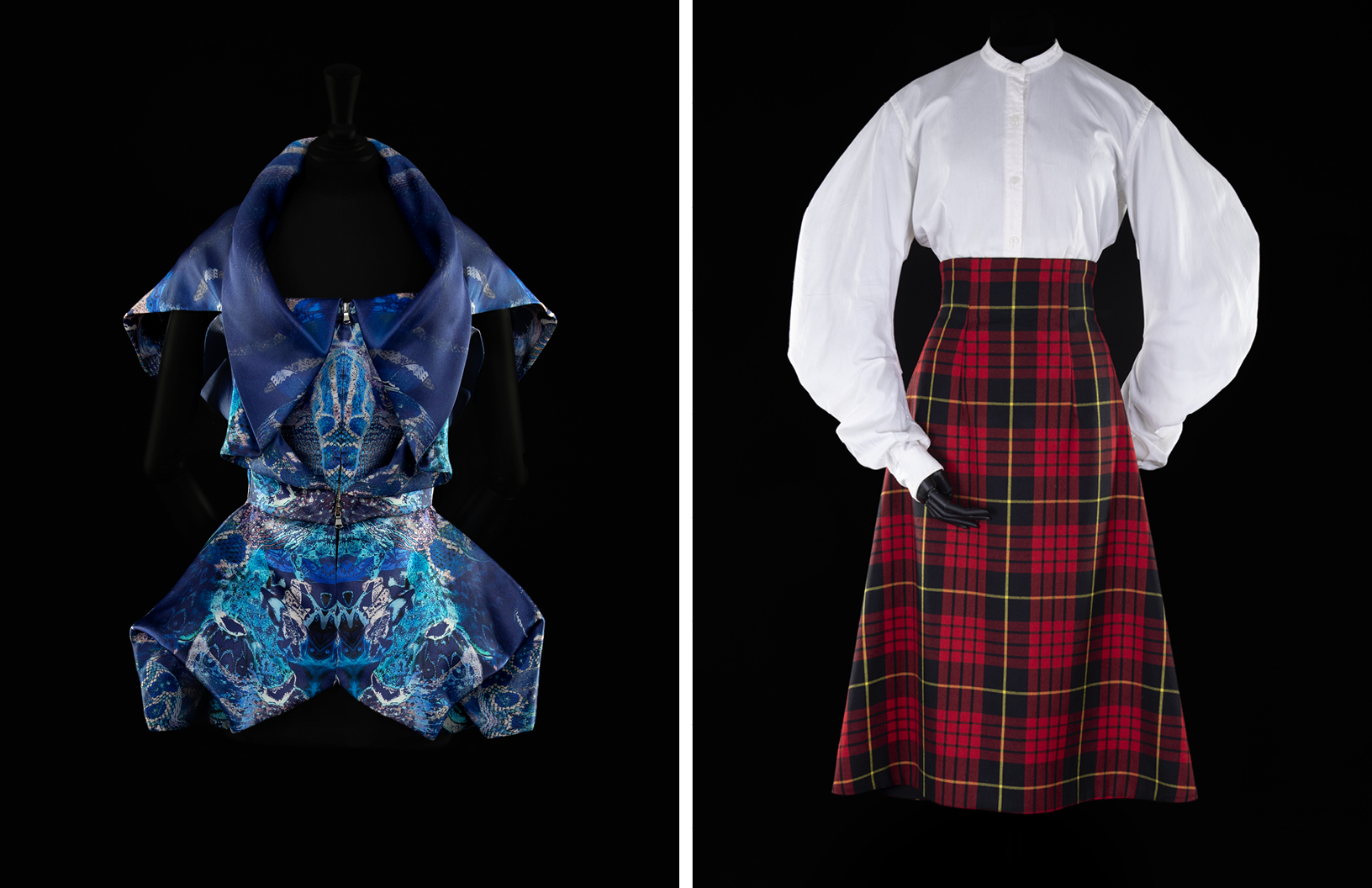
Plato’s Atlantis, Spring/Summer 2010
Silk printed jacket
Courtesy of Barrett Barrera Projects & RKL Consulting
Photo by Sarah Carmody
opposite
Highland Rape, Autumn/Winter 1995
Ensemble: Tartan high-waisted alien skirt + White shirt with pleated elbows
Wool + cotton
Courtesy of Barrett Barrera Projects & RKL Consulting
Photo by Sarah Carmody
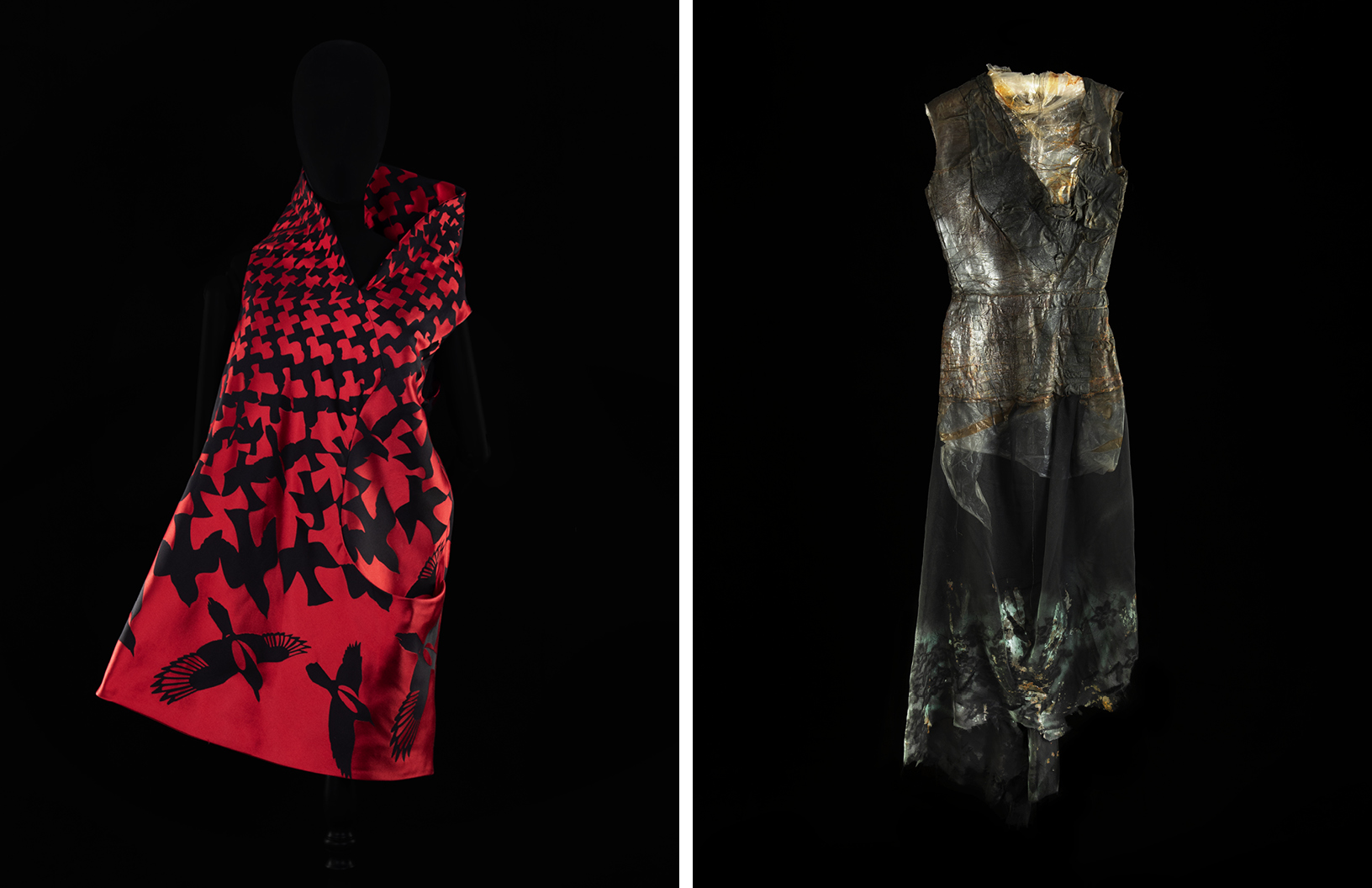
The Horn of Plenty, Autumn/Winter 2009
Silk printed dress Silk
Courtesy of Barrett Barrera Projects & RKL Consulting
Photo by Sarah Carmody
opposite
Highland Rape, Autumn/Winter 1995
Asymmetrical deconstructed torso dress
Silk rayon, car spray paint, resin, plastic wrap, thread
Courtesy of Barrett Barrera Projects & RKL Consulting
Photo by Sarah Carmody
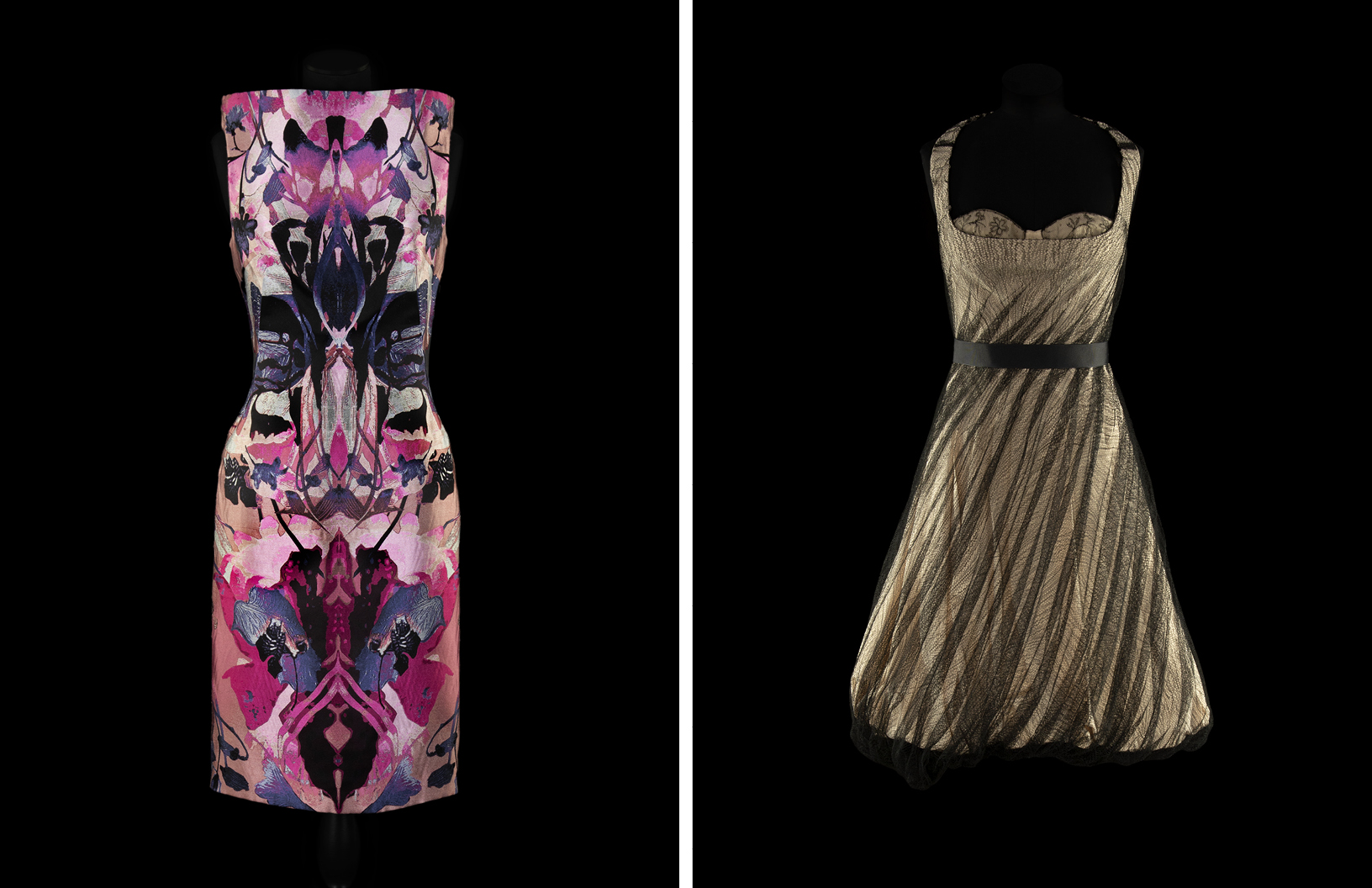
Pre-Autumn/Winter 2010 Brocade
boat neck dress
Silk, acetate
Courtesy of Barrett Barrera Projects & RKLConsulting
Photo by Sarah Carmody
opposite
Sarabande, Spring/Summer 2007
Halter dress with black lace overlay
Silk blend, lace, grosgrain
Courtesy of Barrett Barrera Projects & RKL Consulting
Photo by Sarah Carmody
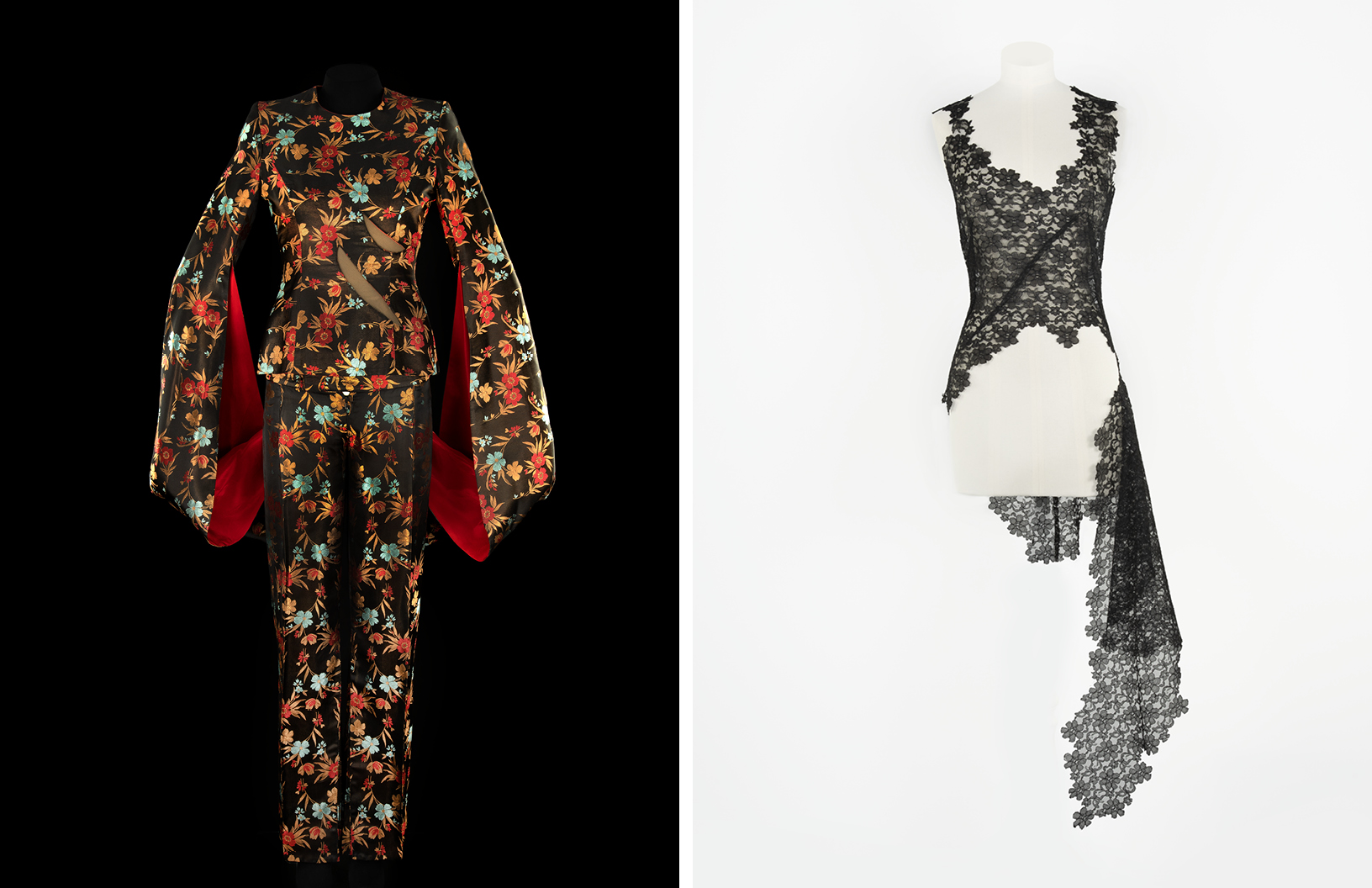
The Hunger, Spring/Summer 1996
Chinese silk brocade suit with slashed paneled top
Silk brocade,silk mesh, silk, taffeta
Courtesy of Barrett Barrera Projects & RKL Consulting
Photo by Sarah Carmody
opposite
Highland Rape, Autumn/Winter 1995
Black lace short asymmetrical top
Lace
Courtesy of Barrett Barrera Projects & RKL Consulting
Photo by Sarah Carmody
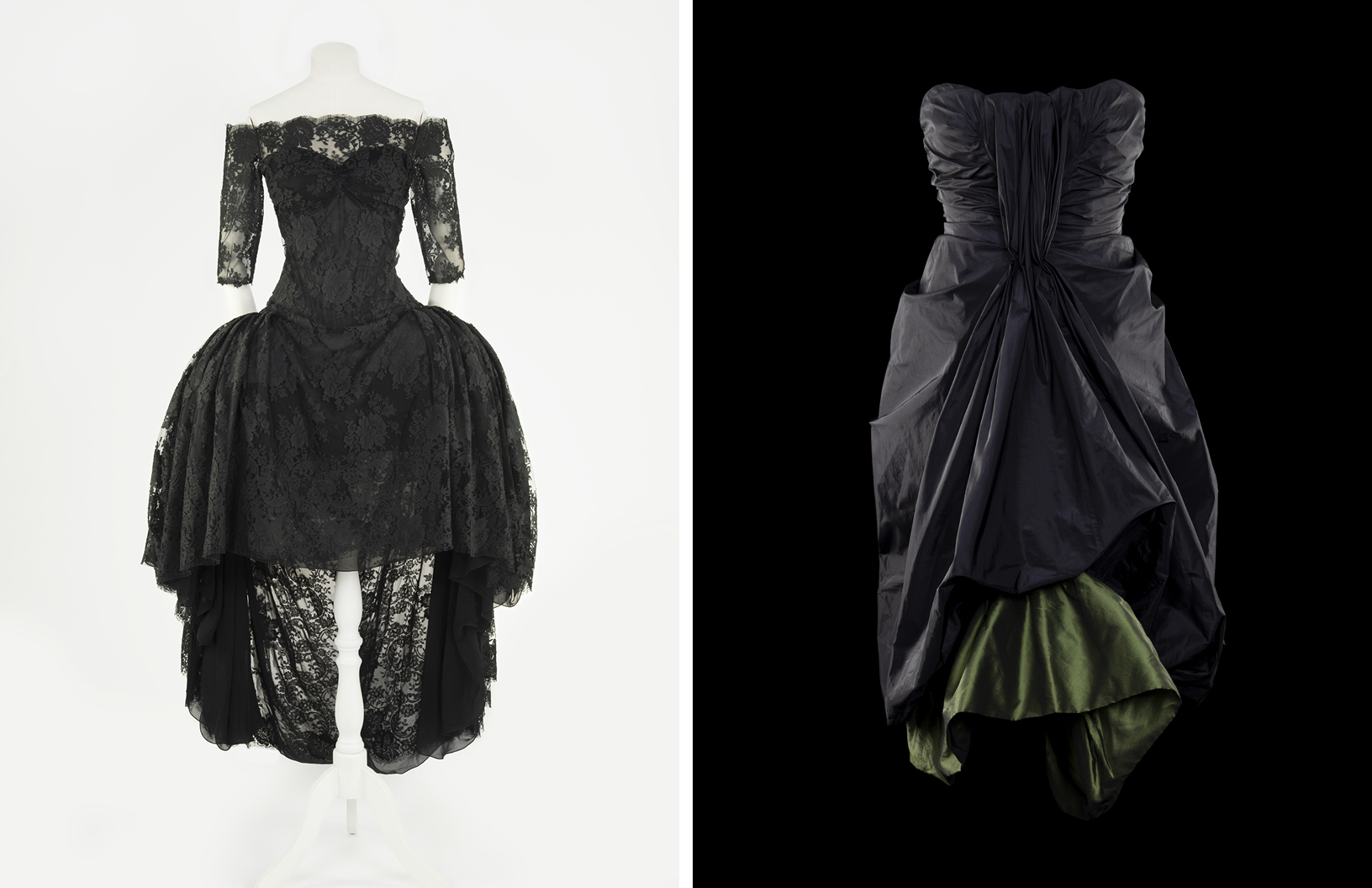
Sarabande, Spring/Summer 2007
Black lace off-the-shoulder gown
Cotton, polyester
Courtesy of Barrett Barrera Projects & RKL Consulting
Photo by Sarah Carmody
opposite
In Memory of Elizabeth Howe, Salem, 1692, Autumn/Winter 2007
Evening dress with balloon skirt
Silk taffeta
Courtesy of Barrett Barrera Projects & RKL Consulting
Photo by Sarah Carmody
‘Introducing Lee Alexander McQueen’ is currently on view at Barrett Barrera Projects in Saint Louis, MO, USA. On show Thursdays to Saturdays from 12 p.m. to 5 p.m. with special, limited access for at-risk individuals on Thursdays from 10 a.m to 12 p.m.
words. Braden Bjella


Schön! Magazine is now available in print at Amazon,
as ebook download + on any mobile device












